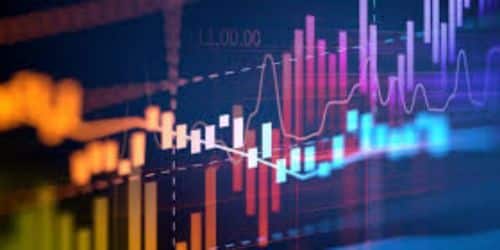Your company produces a lot of data every day. Making more informed judgments requires transforming data into useful insights. You may comprehend and derive insights from past and current data using data management solutions like business intelligence (BI), data analytics, and data science. Hence, differentiating between BI and business analytics can be challenging. Both names are frequently useful interchangeably. In this post, we will learn the difference between business intelligence vs business analytics (BI vs BA), SAP company analytics, and software.
Business Intelligence vs Business Analytics
But how do these solutions differ from one another, and which one is best for your company’s requirements? The differences between business intelligence (BI), data analytics, and business analytics are complex, and to further complicate matters, the phrases are sometimes used interchangeably. Let’s start with some basic definitions before we explain the distinctions between Business Intelligence vs Business Analytics.
Data is useful in business intelligence to manage a company’s daily operations. You can collect information on your existing activities with the aid of a business intelligence specialist. The company’s current business objectives include performance, report generation, and workflow expansion.
Business intelligence tools can be created using systems and software. Data mining, online analytical processing, and spreadsheets are a few of these tools. Some experts also classify statistics and prediction software as business intelligence. Challenges in organizations and particular industries are facilitated by business intelligence. Companies succeed in their objectives when they maintain their focus on their main objective.
Business analytics develops growth strategies by using quantitative methods to estimate the future. BI also provides executives with information on their current clientele. Future customer behavior can be predicted using business analytics. A group of prediction techniques useful in business intelligence is called business analytics. B2B analytics tools carry out tasks like text mining, image analytics, forecasting, and correlation. These tools are frequently used by data scientists, increasing the demand for business analytics.
Difference Between BI vs BA
There are many significant contrasts between business intelligence and business analytics (BI vs BA). There are numerous differences between enterprises, job growth, size, and age. Organizations have a choice between investing in the present and the future. These variations must be taken into account when making investments in analytical and business intelligence technologies. Here are the differences between BI and BA
#1. Job and Language Trends
Business analytics is more recent and fashionable than business intelligence. Despite the substantial overlap in definitions and usages. Google searches for business analytics have outpaced those for business intelligence. Business analytics has developed into a broad phrase for statistical and predictive technologies. In order to hire one of the few available data scientists and analytics directors, businesses are competing.
#2. Age and Organizational Size
Analytical tools and business information might also vary depending on the size of a firm. Business intelligence tools can also be useful for organizations without data scientists. Corporate data is useful for the business to enhance operations or make future plans. All sizes of businesses look for predictive planning tools. BI solutions might be a better choice for businesses that want to learn more about their internal workings or employee performance. In general, most organizations want a mix of the two.
#3. Present vs Future Focus
Business intelligence and business analytics differ frequently in how they address current or upcoming business needs. Business intelligence is the practice of examining past data to ascertain business activities. As an alternative, business analysts might examine historical data to forecast potential future events and how the company might move forward.
Business executives can benefit greatly from using business intelligence. It is possible to increase productivity, simplify operations, or identify “pain points” in your workflow. Perhaps changing company models is a better application for using business analytics. Adding new tactics and maximizing current ones are crucial as firms develop.
#4. Business Analytics Is More Expressive Than Business Intelligence.
Data visualization and analysis of growth and slowdown are based on a number of variables. Business intelligence has a larger range of genres and is more analytical in nature. Using both old and new data, BA examines client priorities and needs. The report goes beyond just summarizing its findings.
#5. The Business Analysis Takes A Much Broader View.
BA focuses on making immediate improvements, whereas BI relies on gathering data. To enhance operations, the business intelligence departments continuously examine data. Businesses employ data mining, reporting, and analysis to enhance their business plans. It has some direct connections to business analysis. Although BA is necessary for strategy development, it would not be achievable without it. Future business operations will be reprogrammed by BA to increase profitability.
#6. Business Analysis Contributes More To Decision-Making Than Business Intelligence.
The majority of large firms rely on analysts to forecast upcoming difficulties and market changes. Business intelligence provides all the information that analysts need. This intelligence is also transformed into useful resources through business analytics.
Bi Analytics Company
These businesses collect data, do analysis, and compile the results into dashboards, reports, charts, and other useful formats. The decisions that businesses then make are game-changers since they are based on this easily digested information. We’ve collected a list of Bi analytics company intelligence providers to assist companies in making more informed decisions by extracting insights from data.
#1. Apollo.io
Apollo.io thus offers its clients a platform for B2B data analytics and sales engagement, along with tools that entrepreneurs, marketers, and salespeople may use. Along with customized templates for automated email outreach, the platform’s capabilities include a database of more than 250 million contacts with pertinent data to assist users in connecting with suitable prospects.
#2. Toast
This business analytics platform was created with the food industry in mind, both in terms of hardware and software. Compared to traditional tablets, Toast’s kitchen hardware can handle greater temperatures. The software’s restaurant-specific statistics also assist managers in locating workflow bottlenecks in the kitchen or, at the front of the house, in monitoring changes in customer volume throughout the day and year.
#3. insightsoftware
With Longview Analytics, one of its many data intelligence tools, insightsoftware enables businesses to monitor costs and revenue sources. This financial analytics tool centralizes data in one place and creates automated financial dashboards. The platform’s financial reports are also considerably more aesthetically pleasing than Excel and come with simple point-and-click functionality.
#4. GHX
Healthcare organizations and providers are assisted in finding solutions by Global Healthcare Exchange (GHX). Through contracting, pricing alignment, invoicing, payment automation, and other services, the business intelligence vendor also assists healthcare businesses in improving their skills and streamlining tasks, which improves outcomes and lowers operating costs.
#5. Sisense
No matter if they use no code or code first, Sisense’s analytics platform is made for a variety of businesses. To connect to all of a company’s data, the platform integrates with data warehouses like Snowflake and Amazon Redshift. Teams may then quickly produce understandable data visualizations and use machine learning and predictive analyses to look forward to new opportunities.
#6. Heap
Heap tracks all consumer behavior, from PC clicks and mobile swipes through completed transactions, rather than waiting to be told what to track. The platform gathers pertinent data from numerous partner websites, including Salesforce and Shopify, in addition to client websites. Users can adjust their messaging strategy to particular client groups by mining the resulting hoard without writing any code.
#7. Domo
Domo provides businesses with a customizable platform that allows data to be stored on the company’s own cloud or on Domo’s cloud. The entire staff of a company is also able to participate in the cloud thanks to accessible dashboards and a variety of low- and no-code solutions. While using machine learning to automate decision-making, the Domo platform can link to data sources like Google and BigQuery for even more convenience.
SAP BI Analytics
SAP Bi Analytics is a group of data warehousing and analytics tools that assist companies in finding, sharing, and acting upon significant trends in their own data. Consequently, SAP HANA, SAP BI and SAP Analytics Cloud, SAP BW/4HANA, and SAP Data Warehouse Cloud are all part of it. In order to describe trends, anticipate outcomes, boost performance, suggest the best course of action, and direct decision-making at various levels within an enterprise, SAP Analytics products analyze business data.
Advantages and Key Differences of SAP BI Analytics
- Make Decisive Business Choices: Through business intelligence, enhanced analytics, and collaborative planning tools that assist users in working together to uncover opportunities in data, SAP Bi Analytics promotes data-driven decision-making.
- Give Employees Access to Data: With the SAP business analytics package, employees at all levels have role-appropriate access to confidential data. By doing this, data silos are diminished and data literacy is encouraged across the board.
- Coordination in Planning: To make decisions that are coherent and founded on collaboration, management can enhance departmental planning alignment and draw on the collective wisdom of their organization.
- Transform information into value: Insights from the company’s distinctive proprietary data are used to support swift, confident decision-making through the use of SAP Analytics, which links people, information, and ideas.
- Improve Analytics: To streamline analytics operations from A to Z, SAP business analytics interfaces with existing data sources and platforms.
Key Elements OF SAP BI Analytics
#1. Data Warehousing
Data from many sources is combined in real-time by SAP data warehouse cloud, which then processes the information into a single safe database for analysis. By storing and distributing rich semantic information over the cloud, it streamlines data access.
#2. Enhanced Insights
By spotting trends in the data, users can learn what caused previous outcomes and use these insights to speed up progress. In data modeling settings, AI and machine learning simulate future scenarios and allow them to anticipate outcomes based on defined inputs.
#3. Customized Setting
In order to guarantee totally separate instances of the software, even within an organization, SAP HANA offers numerous tenant databases. It combines data from various sources and provides cutting-edge customization possibilities to fulfill the particular requirements of enterprises.
#4. Processing in Real-Time
Through an easy-to-use user interface, SAP BW/4HANA ensures real-time processing of large amounts of data. Simplified data modeling can be used by users to find trends and anticipate future events.
#5. Coordinated Planning
Real-time scenario simulations, predictive analytics, embedded analytics, and reporting capabilities provided by SAP Analytics Cloud and SAP integrated business planning connect business planning executed across locations on the cloud.
BI Analytics Software
Any program that gathers and analyzes substantial amounts of unstructured data from internal and external systems and makes the data ready for analysis is referred to as (business intelligence) BI analytics software. The program is typically used for complicated business data reporting and querying. Better business decisions, higher income, increased operational efficiency, and competitive advantages are the ultimate goals of BI analytics software.
Data is gathered from a variety of sources, including databases, spreadsheets, and other business applications, and is then transformed into a comprehensible format for analysis by business intelligence tools. The program does data mining, forecasting, reporting, and data visualization using graphs and charts, enabling users to spot trends and patterns in the data. The reporting features of BI analytics software allow users to build unique reports and presentations that can be distributed to stakeholders.
#1. Datapine
With the help of advanced capabilities like predictive analytics and artificial intelligence, datapine, and a BI tool, you can connect your data from different sources and analyze it. With all of your data available, you can build a robust business dashboard, produce pre-made or bespoke reports, or include smart alerts to be warned of objectives and abnormalities.
#2. Domo
Domo is a business intelligence platform that includes a number of systems, starting with data connectivity and ending with data extension through pre-built and custom apps from the Domo Appstore. Also, Domo can be used in conjunction with R or Python scripts to prepare data for predictive modeling as well as for data lakes, warehouses, and ETL tools.
#3. SAS Business Intelligence
Text analysts, Data scientists, data engineers, econometricians, forecasting analysts, and optimization modelers are just a few of the professionals SAS Business Intelligence caters to.
#4. Infor Birst
A cloud-based analytics and business intelligence tool called Infor Birst aids in comprehending and streamlining difficult analytical procedures. Infor Birst is a cutting-edge end-to-end solution with a data warehouse, reporting and visualization platform, and a networked BI approach built on considerable automation and learning technologies.
#5. SAP BusinessObjects
A business intelligence platform called SAP BusinessObjects is made for in-depth reporting, analysis, and data visualization. They offer PowerPoint and Excel connections with Office so you can do live presentations and integrate hybrid analytics to their on-premises and cloud SAP systems.
#6. Pentaho
OLAP services, dashboarding, data mining, reporting, integration, ETL, and other business intelligence features are all available through Hitachi Vantara’s end-to-end data integration and analytics platform called Pentaho. The software seeks to assist enterprises in managing large amounts of data to favorably influence strategic decisions and business outcomes with all these functions, some of which are offered as open-sourced plugins.
Is Business Intelligence a Part of Business Analytics?
Business analytics (BA) and business intelligence (BI) are frequently used interchangeably.
Who Earns More Business Analyst or Business Intelligence?
Compared to business analysts, business intelligence analysts make greater money. Payscale claims that whereas business analysts make $70,644, BI analysts make USD $71,050 annually.
How Is Business Intelligence Different From Data Analytics and Business Analytics?
Businesses and departments can achieve organizational objectives by using business intelligence to address ongoing operations. Companies that wish to change the way they conduct business can benefit from data analytics.
What Do Business Intelligence Analysts Do?
Data like revenue, sales, market data, or customer interaction indicators of a firm may be gathered, cleaned up, and analyzed by a business intelligence analyst.
Related Posts
- TOOLS FOR BUSINESS: How It Works and Free Tools For Business
- BUSINESS INTELLIGENCE TOOLS: Meaning, Best Tools, And Guide
- MARKETING INTELLIGENCE: Definition, Types, Tools, Strategies & Examples
- TOP 20+ DATA ANALYTICS SOFTWARE in 2023





